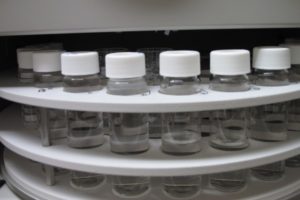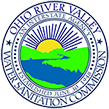
The Organics Detection System is a cooperative effort involving water utilities and other major Ohio River water users to monitor volatile organic compounds (VOCs) in the river. The program is designed to detect low level concentrations of volatile organic compounds at water intakes located on the Ohio River and certain tributaries for purposes of monitoring water quality conditions for the protection of public water supplies. Seventeen gas chromatographs (GCs) located on the Ohio, Allegheny, Monongahela, Kanawha and Elk rivers are operated daily to assure that unreported releases or spills of organic compounds do not compromise drinking water intakes. If an organic compound is detected at or above the programs threshold, ORSANCO is notified by the GC operator and a verification procedure is initiated to validate the presence of the compound in the river. Once validated, the information may be distributed to downstream water utilities, as well as state and federal agencies, as appropriate.
ORSANCO works closely with the program’s GC operators to assure proper operation and calibration of the analytical instrumentation. Operators have access to data within the ODS network. Additionally, annual training sessions are held to facilitate communication between GC operators. Instrumentation is replaced or upgraded on an as-needed basis.
ORSANCO Routine Volatile Organic Pollutants Sampling
For more information on the Organics Detection System, please contact Lila Xepoleas Ziolkowski.
Other Programs
- Algae & Nutrient Monitoring
- Bacteria TMDL
- Biennial Water Quality Assessment
- Bimonthly Water Quality Sampling
- Clean Metals
- Contact Recreation Bacteria
- Dissolved Oxygen Monitoring
- Emergency Response
- Fish Population
- Fish Tissue
- Harmful Algal Blooms
- Macroinvertebrates
- Mercury Supplemental Studies
- National Rivers and Streams Assessment
- Nutrient Reduction Activities
- Ohio River Users
- Organics Detection System (ODS)
- PFAS Supplemental Study
- Pollution Control Standards
- Source Water Protection
- Water Quality Trends
- Watershed Pollutant Reduction
- Wet Weather Studies

